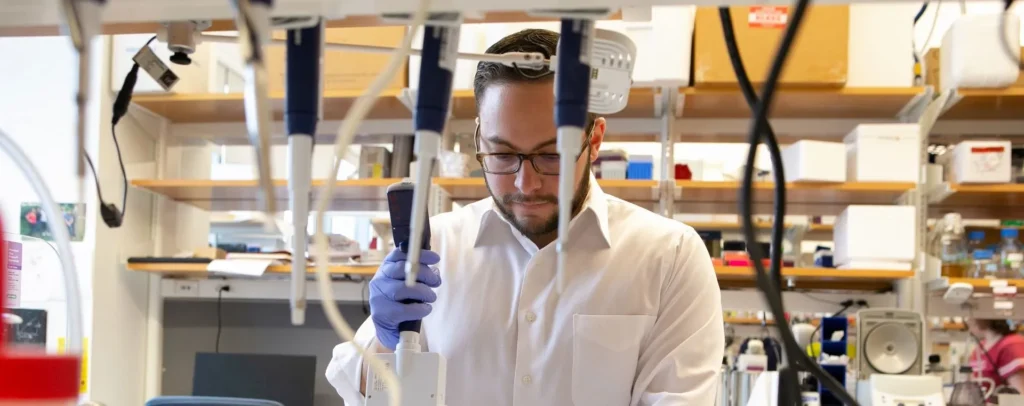MD-PhD vs. MSTP: The Battle of Acronyms
Oh, the world of medical training! Infusing your brain with knowledge while juggling the complexities of being both a doctor and a scientist sounds like an exhilarating ride, doesn’t it? But, are we talking about the same ride when we mention MD-PhD and MSTP? Spoiler alert: Not quite! Let’s unravel this linguistic puzzle and categorize these acronyms like a professional Tetris player.
What’s in an Acronym? MD-PhD Explained
To kick things off, let’s break down what MD-PhD actually means. MD-PhD programs offer a dual degree for individuals who wish to immerse themselves in both the medical and research fields. This path is perfect for those who dream of wearing a white coat and wielding a microscope at the same time. Talk about a multitasking genius!
In an MD-PhD program, you gain your Doctor of Medicine (MD) and Doctor of Philosophy (PhD) degrees, allowing you to treat patients and conduct groundbreaking research, all within a curriculum designed to blend both worlds. Typically, these programs last about 7-8 years, which, let’s be honest, is quite a commitment—this is not a stroll in the park!
MSTP: The Fancy Grant Program
Now, here comes the star of the show: the Medical Scientist Training Program (MSTP). Think of MSTP as the VIP guest at the MD-PhD party—this program specifically indicates that the institution has received a training grant (T32) from the National Institute of General Medical Sciences (NIGMS). What does this mean for you, the aspiring medical scientist? Well, grab your party hat because this grant provides financial support for trainees enrolled in the program. Now that’s a cherry on top!
As of now, there are approximately 46 MSTP programs across various medical schools in the U.S. In short, if an MD-PhD program is a buffet of knowledge, MSTP is the golden ticket that grants you a complimentary meal!
What’s the Connection? MD-PhD and MSTP
If we put on our detective glasses and analyze the connection, the MSTP programs fall under the umbrella of MD-PhD programs; however, not all MD-PhD programs are MSTPs. Picture it like a Russian nesting doll situation—MSTP is nested within the larger MD-PhD category. Though they revolve around a similar goal—training future physician-scientists—the financial backing and specific training grant sets the MSTP apart.
Now, let’s break it down even further:
- MD-PhD Programs: A broader category comprising various institutions and approaches to integrating medical and research training.
- MSTP: A sub-category of MD-PhD programs specifically receiving federal funding to help students tackle tuition and stipend costs, making it a lucrative option.
The Benefits of MSTP: Going for Gold!
So, why should you consider an MSTP if you can just jump into any MD-PhD program? Let’s dive into the all-important benefits:
- Financial Aid: This is arguably the crown jewel of MSTP. Students often receive a stipend and tuition coverage, alleviating some of the financial burdens that come with prolonged education.
- Networking and Research Opportunities: Being part of an MSTP allows you to connect with a network of distinguished faculty members, fellow trainees, and seasoned researchers, which can be invaluable for your future career.
- Tailored Curriculum: MSTP programs often integrate research training into the medical school curriculum, giving you a smoother transition between MD and PhD phases.
- Interdisciplinary Experience: MSTP participants often have the chance to engage in a wide range of research topics, allowing for flexibility and exploration as you find your niche in the medical field.
- Impact on the Medical Community: Graduates from MSTP programs frequently contribute significantly to advancements in medical science, creating a legacy of innovation!
The Application Process: Ready, Set, Go!
So, if you’re itching to apply (and who wouldn’t be?), know that there is a competitive application process ahead of you. Generally, you will need:
- Your shining academic record (YAWN, but necessary!)
- Research experience—because, let’s face it, they want to see you can handle a lab!
- Letters of recommendation—preferably from people who think you’re as amazing as you truly are.
- A keen interest in the physician-scientist pathway—show them you’re in it for the long haul!
Concluding Thoughts: It’s Not Just Structure, It’s About You!
Ultimately, whether you pursue a standalone MD-PhD program or aim for the MSTP require careful thought about your career aspirations. The main takeaway? No, MSTP is not synonymous with MD-PhD, though it plays a crucial role in the ecosystem of medical training.
Choosing the right path means considering factors like financial support, program structure, and networking opportunities. Whether you fancy the straightforward route or want to enjoy the extra perks of MSTP, remember: both paths lead to the ultimate goal—making a remarkable impact on the world of science and medicine. Preach!
So, are you ready to set off on this exhilarating academic adventure? Take your pick, and good luck out there!

